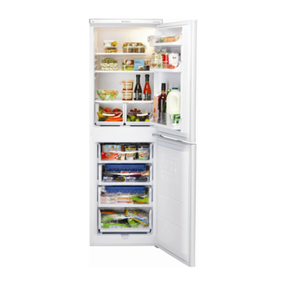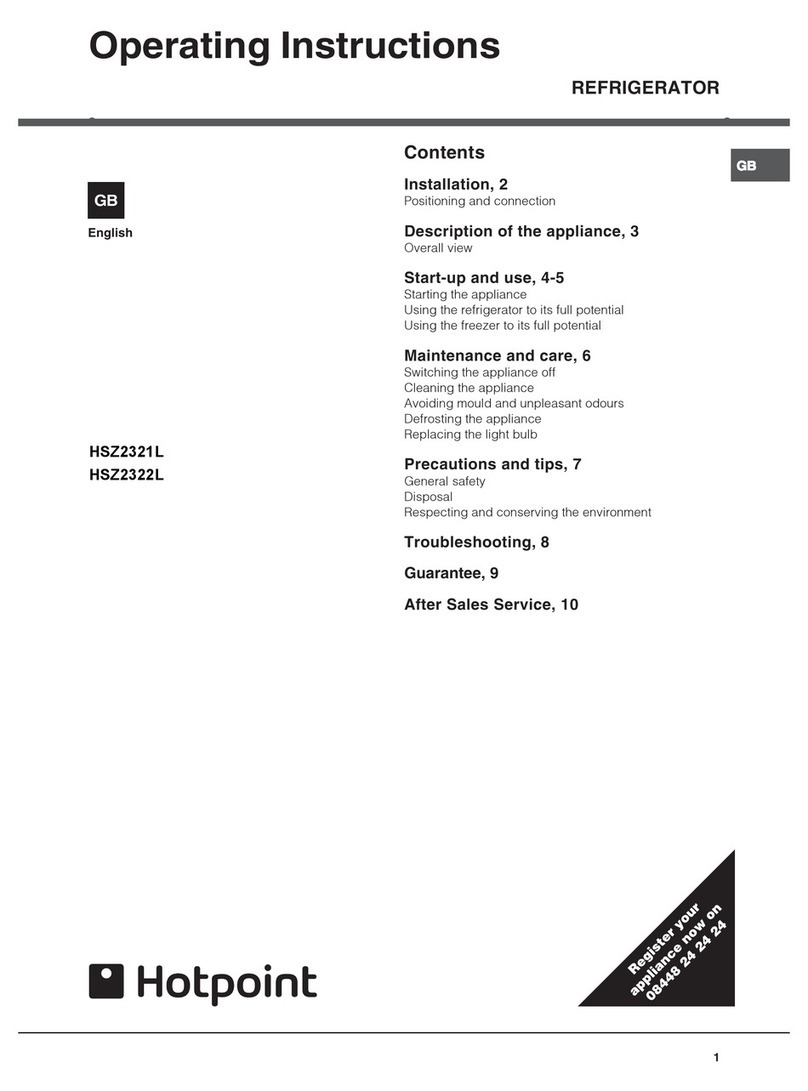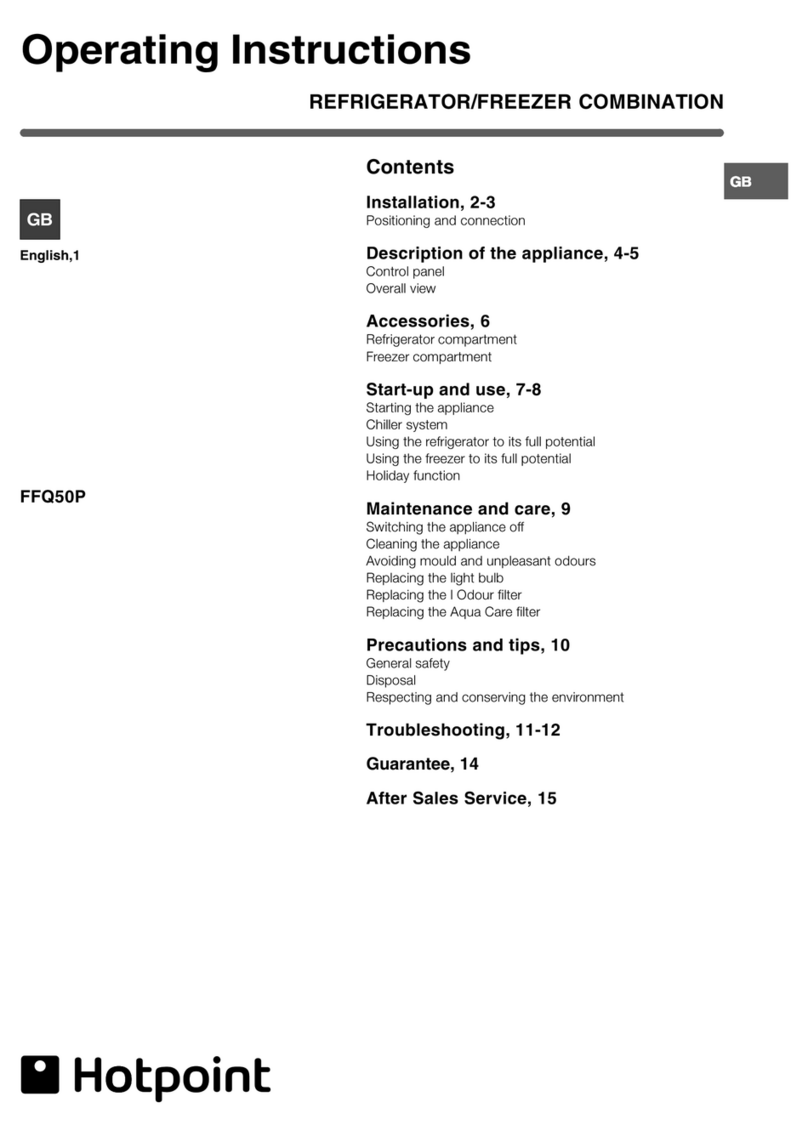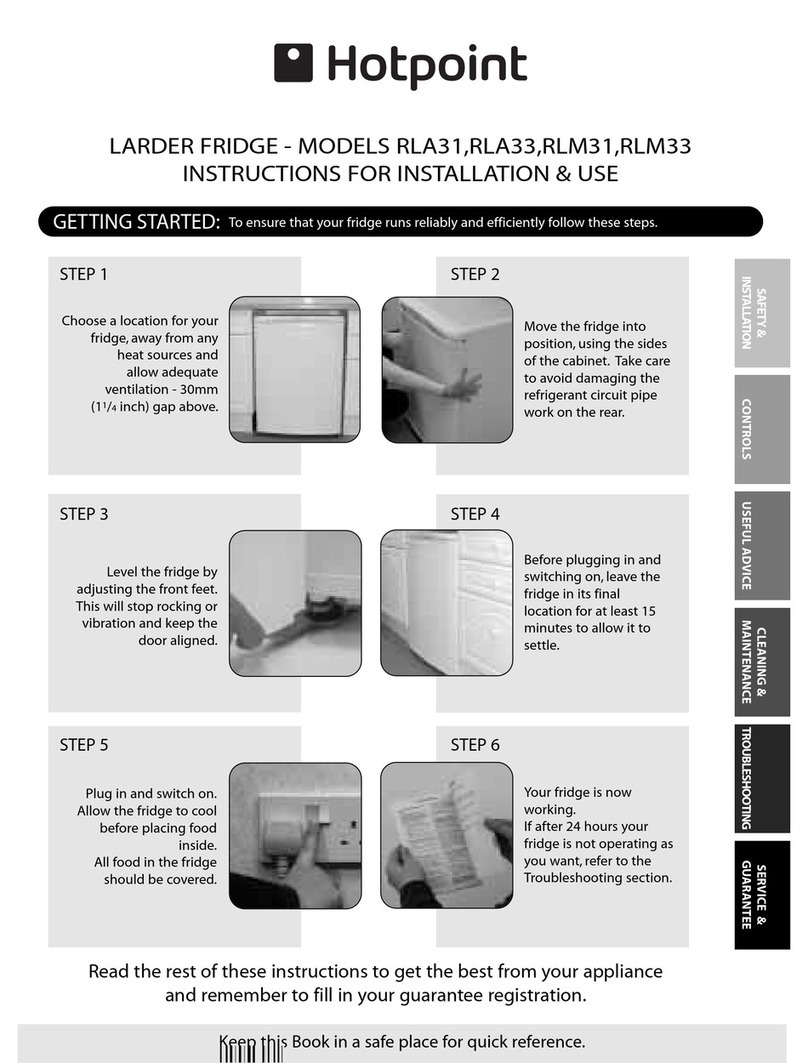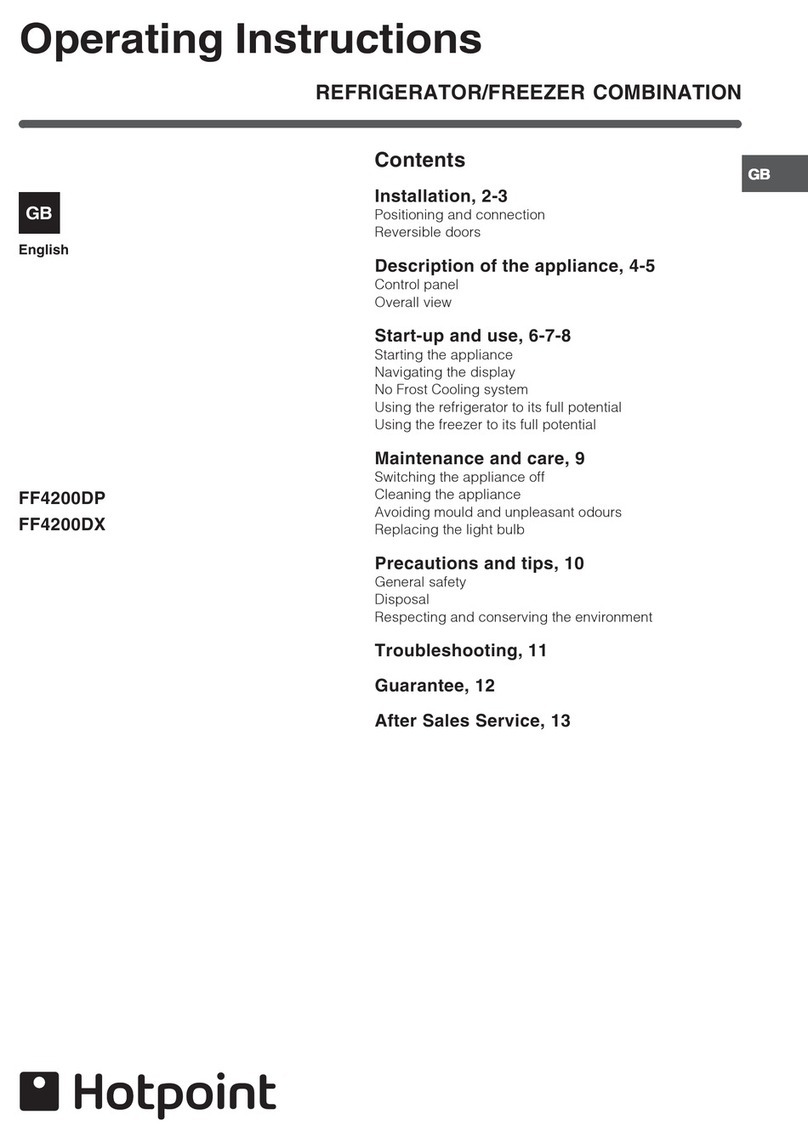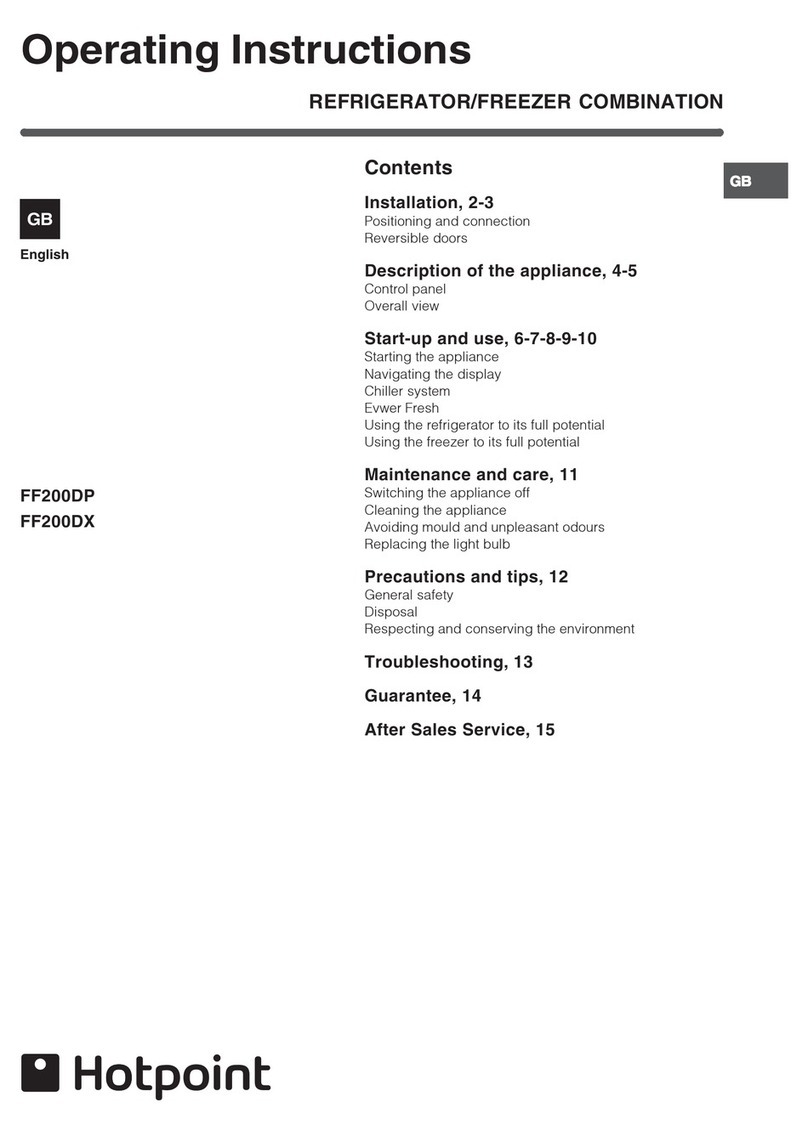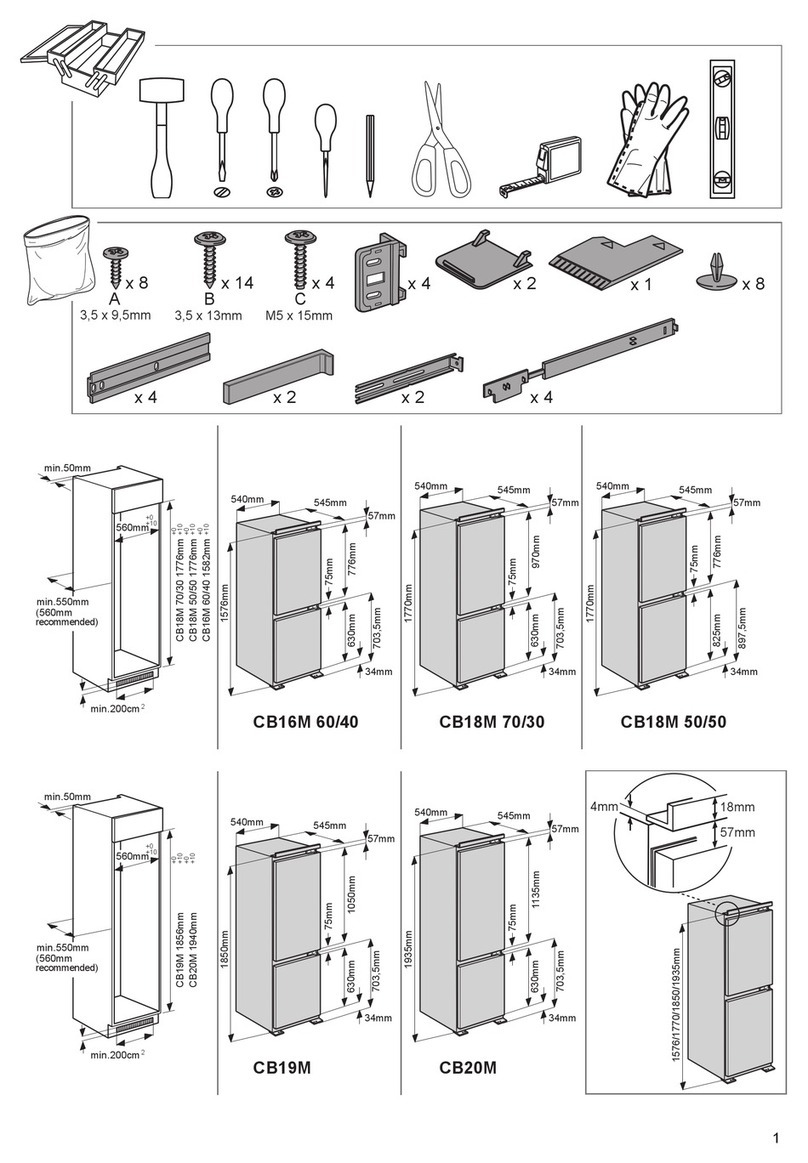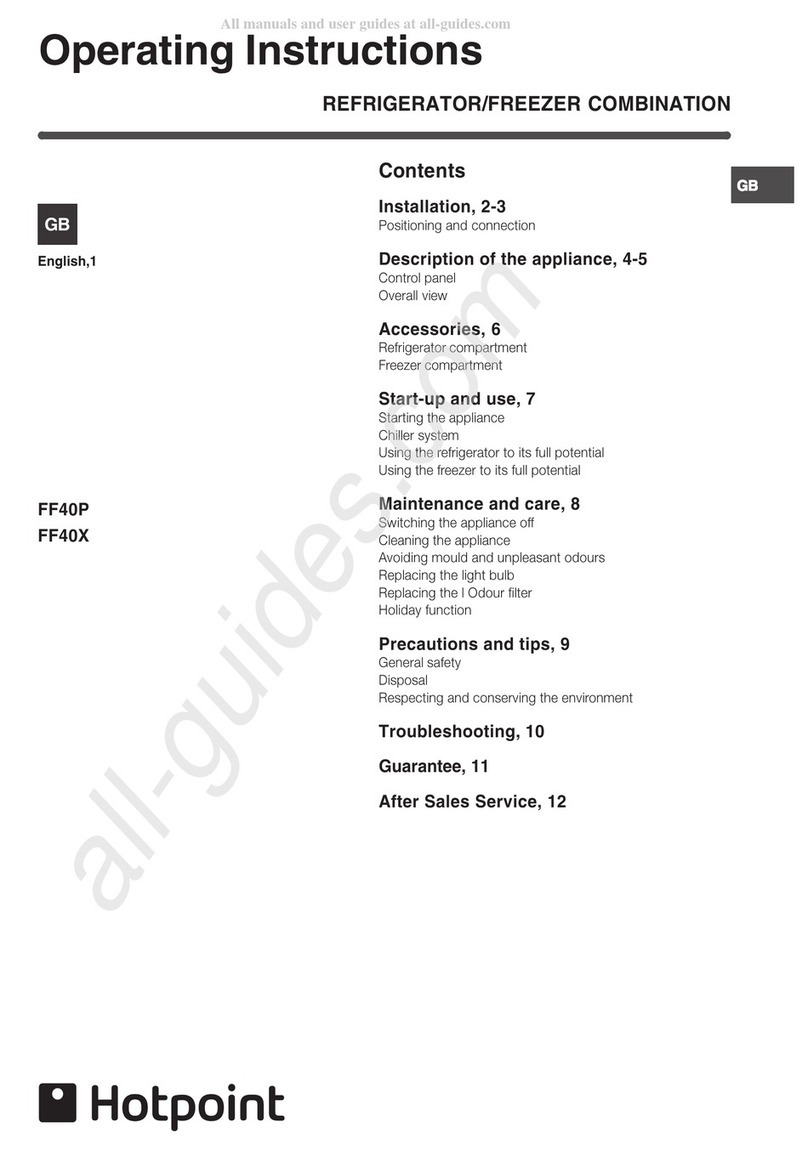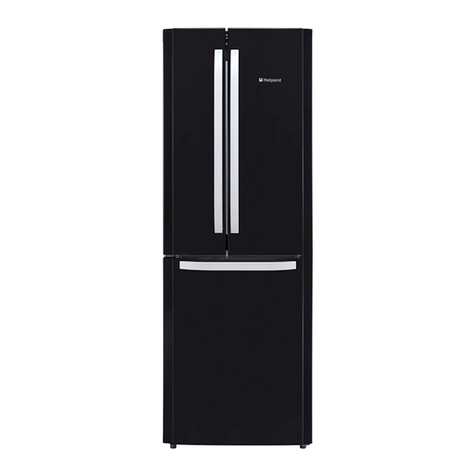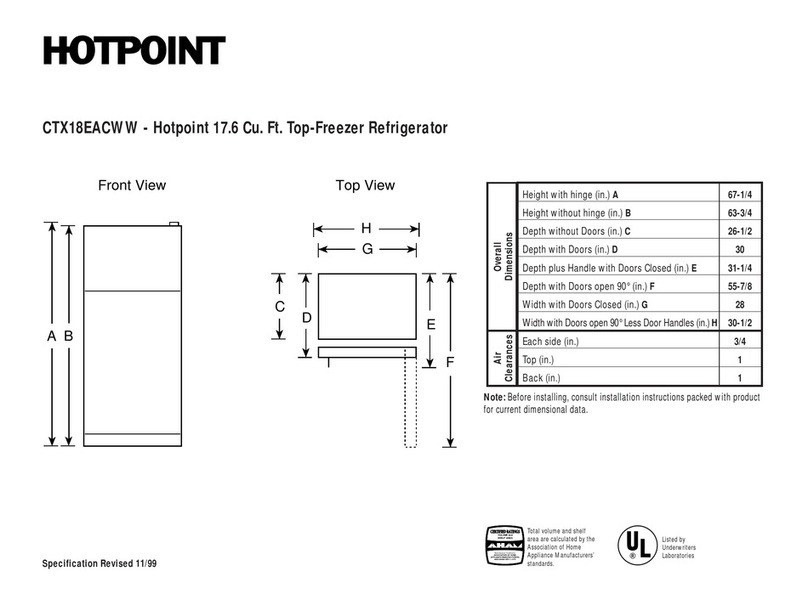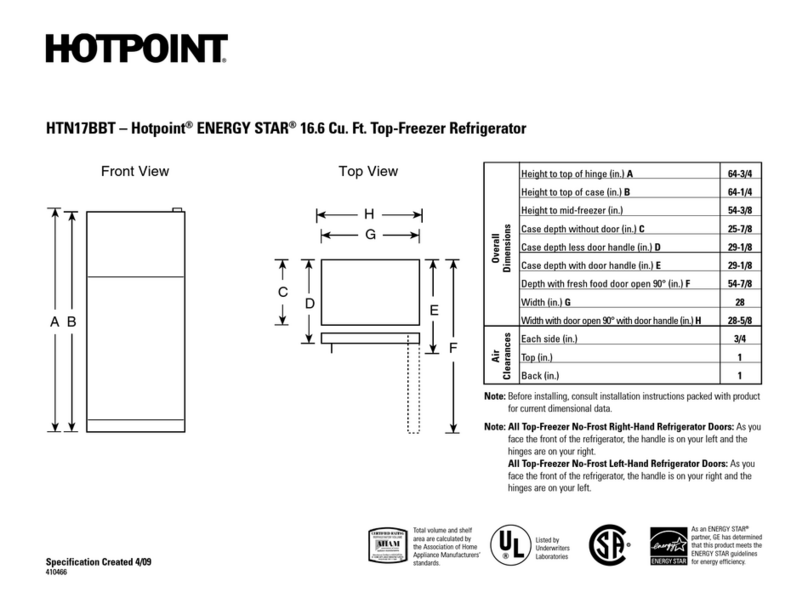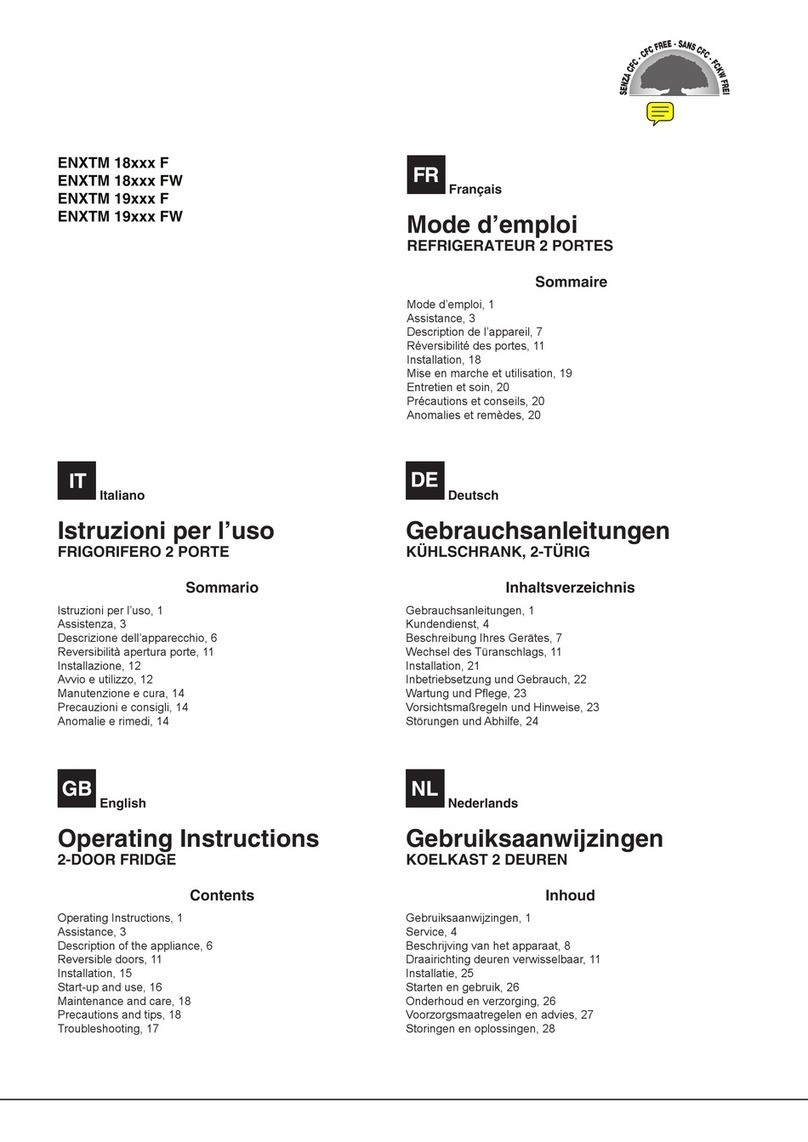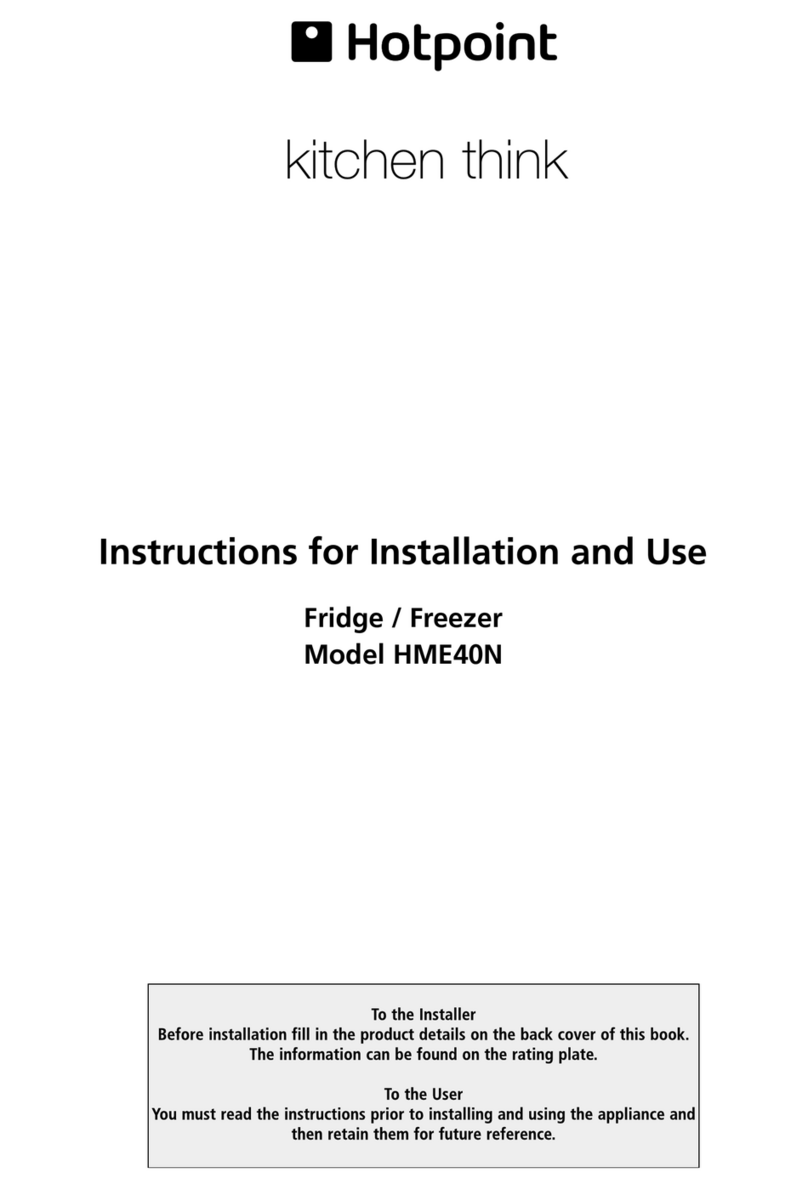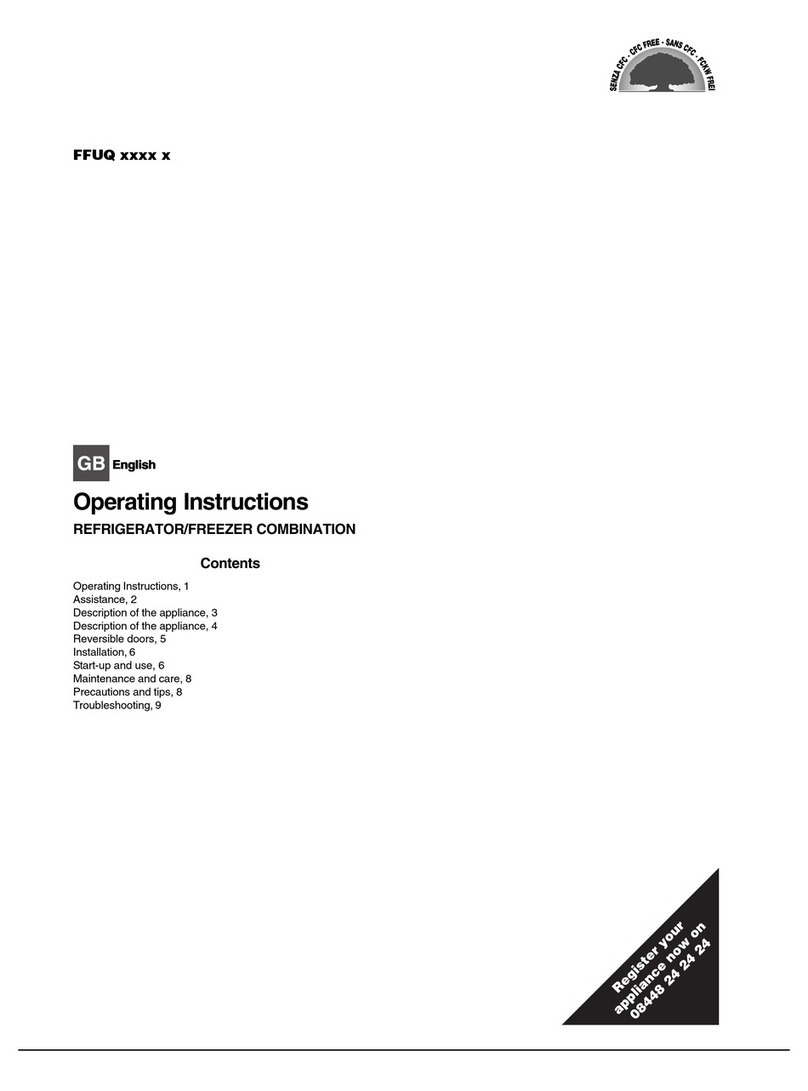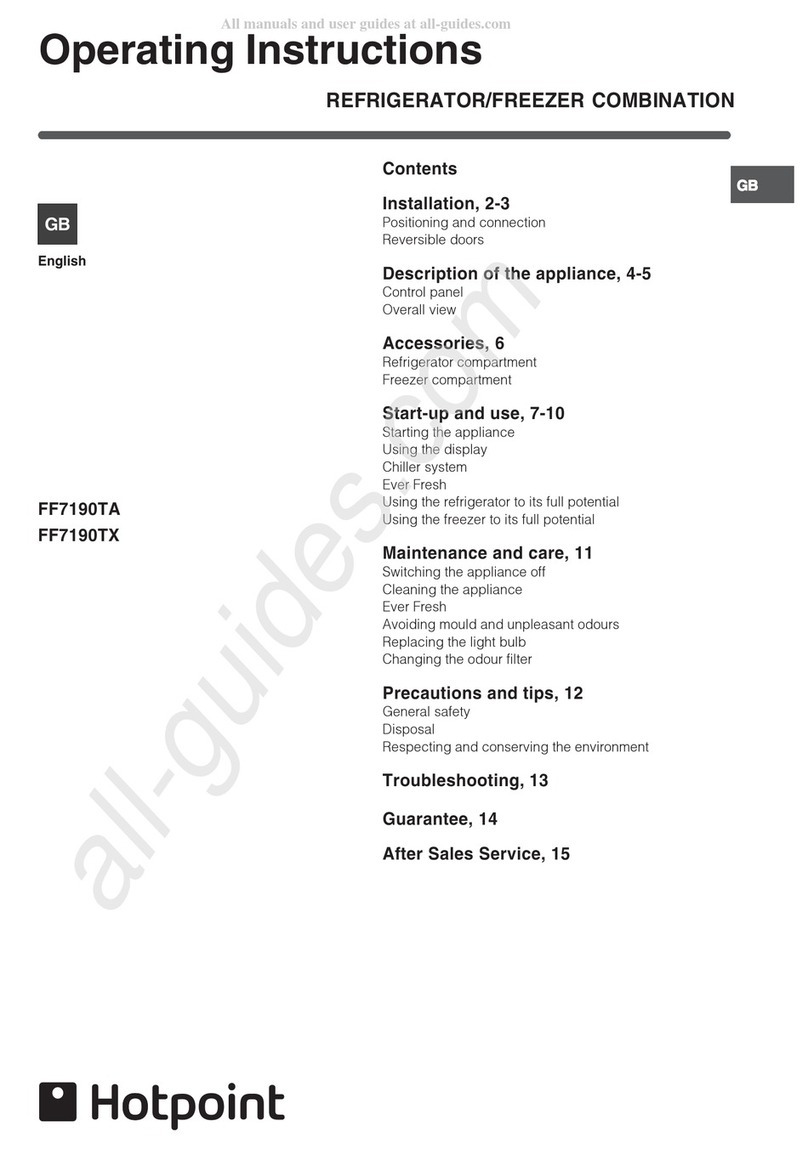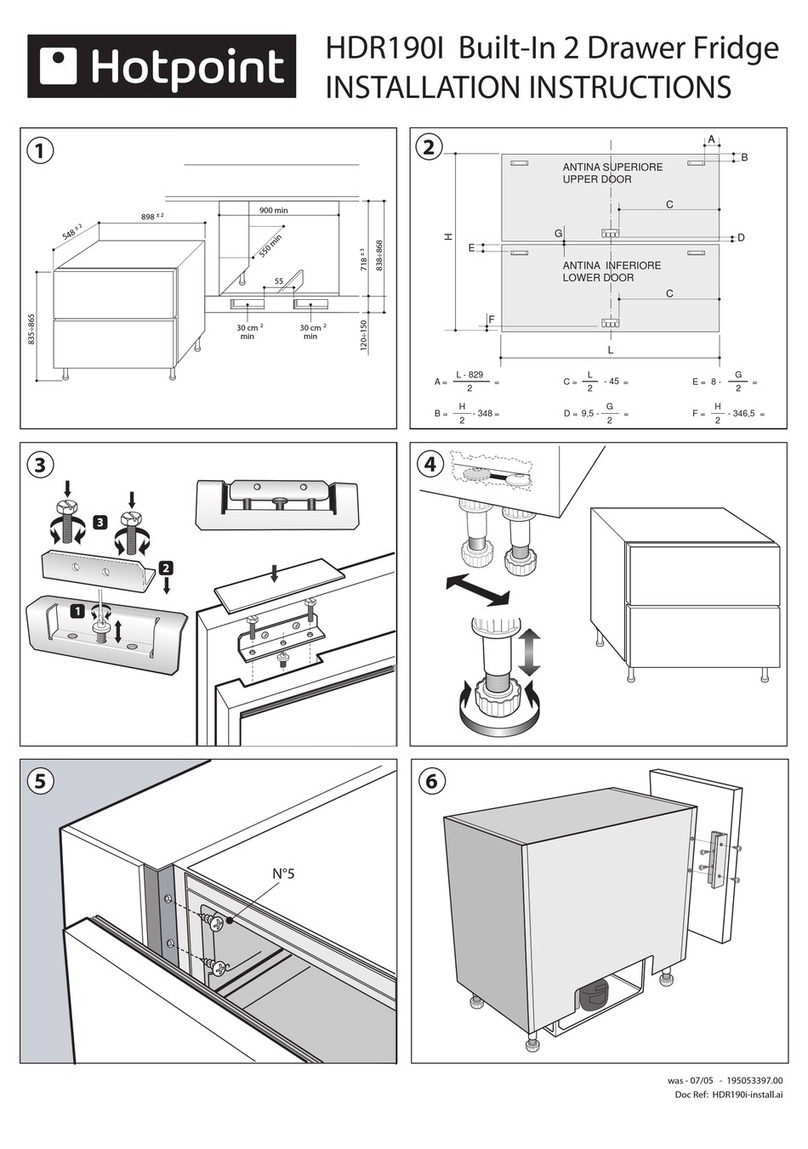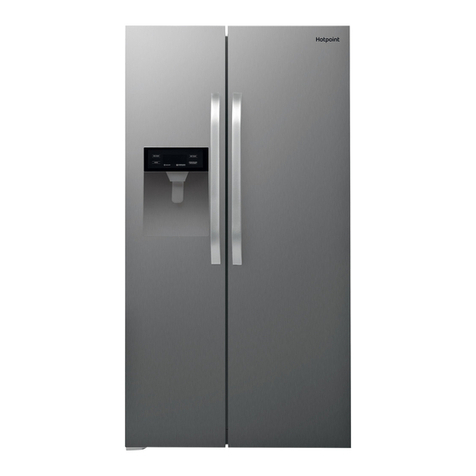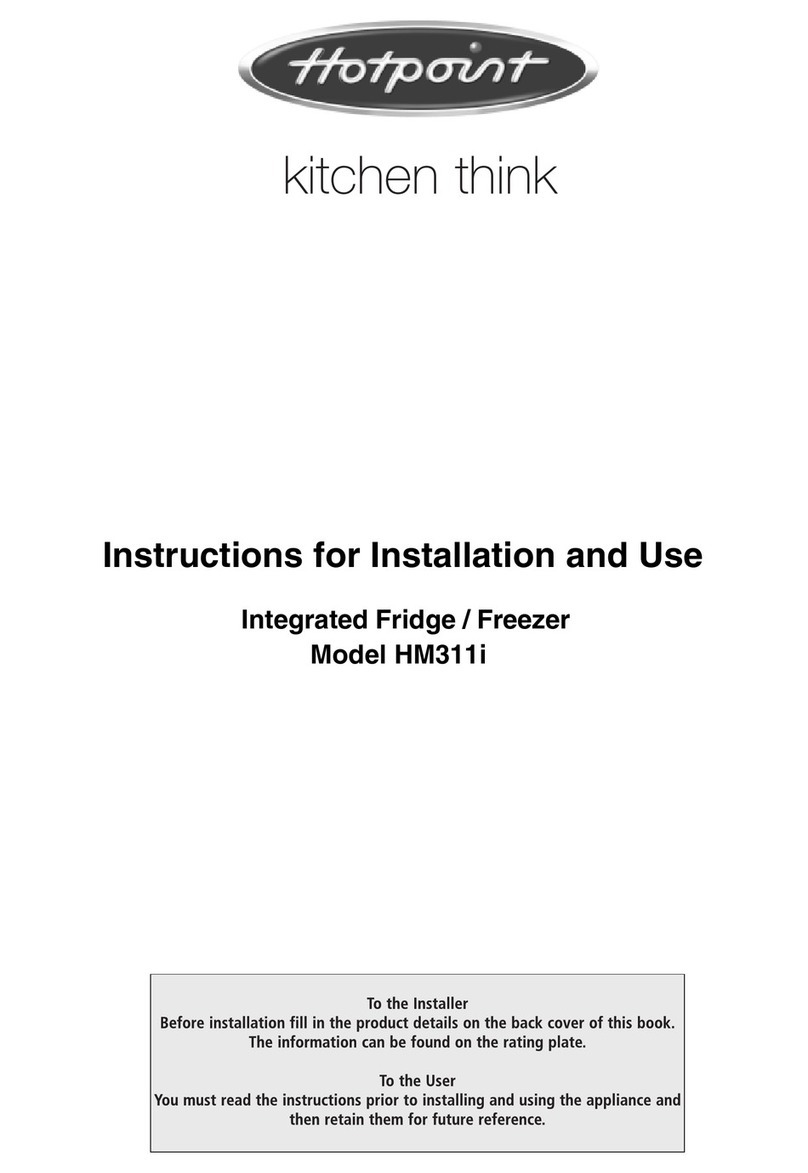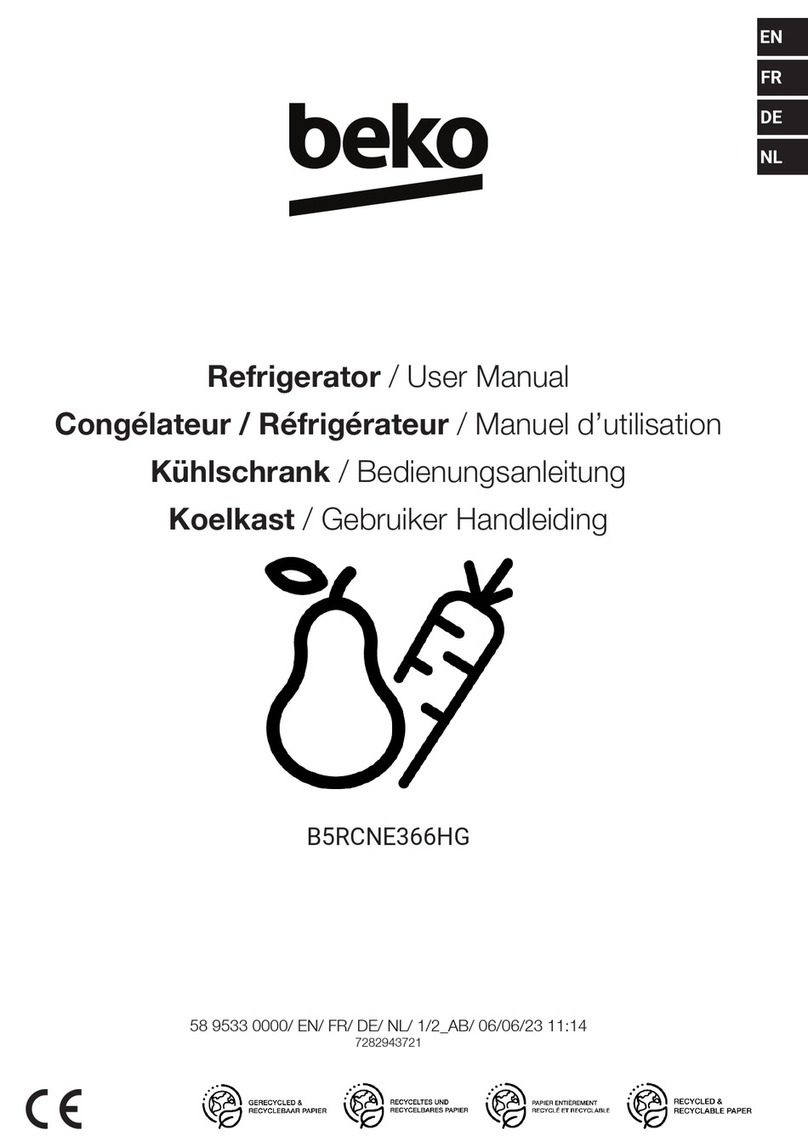
—
storageW’#es
fbi’ meatZ4nd mM
... -..
Eathtg~ua!ityilmps REFRIG#?~TORFt?Efj?ER
after
timeshown ~~Q~04(90F.
mm Meats DAYS
Roasts(Beef& Lamb).. . . . 3to5
Roasts(Pork&Veal).... , . 3to5
St$aks
(Beef). .......... 3tO5
Chops(Lamb).. . .. . . . . . . 3to5
Mops(Pork). ....~..... 3to5
Ground&StewMeats.. . . . 1to2
VarietyMeats. .......... 1to2
Sausage(Pork). ......... 1to 2
ProcessedMeats
Bacon, , ... . . . . ., . . . . . 7
Frankfurters.. . . . . . . . . . 7
Hmn(W~ole). ., . . . . . . . 7
Ham(Half). ..........~1-‚À4-‚}3to5
Ham(Slices)... .. . . . . . . . 3
LmcheonMeats~. . . . . . . . 3trr5
Sausage(Smoked).. .. . . . . 7
Sausage(Dry&Semi-Dry).. . 14to21
Cooked Iiledts
CookedMeatsand
MeatDishes. .3to4
Gravy&MeatBroth.. . . . . 1to2
Fresh
Chicken&Turkey (Whole). . . I to 2
~~i~ken(Pieces).. . . . . . 1to2
~~rkey(pieces), . . . . . 1tO2
Duck&Goose (Whole). 1to 2
Gibiets. ............... 1to 2
CookedPoultry
Pieces(Govered with Broth) 1to 2
Pieces(Mot Covered). . . . 3to 4
CookedPoultryDishes. . . . 3to4
FriedGhicken.. . . . . . . 3to4
OOF.
MONTHS
6to 12
4to 8
6iO12
6to 9
3to 4
5to 4
3to 4
1to 2
1
x
1to 2
1to 2
1to 2
Freezing
not recom-
mended,
2to 3
2to 3
12
:
6
3
6
1
4to 6
4
{Mherthanformeats&poultry) FREEZER
Most fruits and vegetables: . . . .....8-12 months
Lean fish. . . . . . . . . . . . . . . . . . . .6-8 months
F~t{yfish, rolls and breads,
soups, stew, casseroles. . . .2-3 months
C~kes,pies, sandwiches,
Ieft-overs (cooked),
ice cream (original carton). ..1 month max.
P&vtechniqws areconstantlybeingdeveloped.
cofisuI~tttecollegeorCountyExtemion&?NiWor
youriocaiUtilityCompanyforthelatest,information
Mfreezingandstoringfoods.
*U.S. Department of Agriculture ‘
Meats, fish and pouitry purchawxi
fram the store vary in quality and
age; consequently, safe storage
~i~e in ~c9ur refrigerator will vary.
-f-clstore meats; fish arm!
poultry:
~Always remove store wrappings,
~,F?ewKap
in foil, fiirrr or wax paper
and refrigerate immediately.
Tostorecheese,wrapwell with wax
paperor aluminum foil, or put ina
plastic bag!
*Carefully wrap to expel air and
help prevent mold.
@Store pre-packagedcheese in its
own wrapping if you wish.
Tostore vegetables, usethe
vegetable drawers—they’vebeen
designed to preservethe natural
moistureandfreshnessof produce.
@Crispnesscan be maintained by
covering vegetables with amoist
towel.
~As afu~her aid to freshness,
pre-packagedvegetables can be
stored in their original wrapping.
Note: TheSealed &Fresh drawer
(on models so equipped) makes it
unnecessary to wrapcertain foods
which it hasbeen designed to pre-
serve. Thisdrmmr is described
on page Z
Tostore icecream–Fine-quality
ice cream, with high cream
content, will normally require
slightly lower temperatures than
more “airy” already-packaged
txands with low crealmcontent.
@[twill be necessaryto experiment
to determine the freezer compart-
ment location andtemperature con-
trol setting to keep your ice cream
at the right serving temperature.
~The rearof the freezer compart-
ment isslightly colder than the front.
T@s an fc$ods
There are three essential require-
ments far efficient home freezing.
1. initial quality. Freeze only
top-quality foods. Freezing retains
quality and flavor; it cannot improve
quality.
2. Speed. The quicker fruits and
vegetables are frozen after picking,
the better the frozen product will
be. You’ll save time, too, because
less culling and sorting will be
necessary.
3. Proper Use food
wraps designed especially for
freezing.
6
Tofreeze mat, fishandpoultry,
wrap well in freezer-weight foil (or
other heavy-dutywrappingmaterial)
forming it carefully to the shapeof
the contents. This expels air.Fold
and crimp endsof the packageto
provide agood, lasting seal.
Don’t refreeze meat that hascom-
pletely thawed; meat, whether raw
or cooked, can befrozen success-
fully only once,
Limit freezing of fresh (unfrozen)
meatsor seafoodsto number of
pounds at atime asfollows:
CSX20.....f....**....20
pounds
CSX22................21
pounds
kx’xi
for
@Store all like things together. This
not only savestime, butelectricity—
because you can find foods faster.
@P[acethe oldest items up front so
they can be used up promptly.
@Usethe handyshe!vesonthe door
for mostfrequently usedsaucesand
condiments.
@Usethe meatdrawer,ifyour model
hasone, for meatsyou do notfreeze.
Tin slave inWM’Mtyy
andfoaw!txm%
@place most perishable items such
as milk, cream or cottage cheese
toward the rear of the top shelf as
they will stay coldest in this part
of the fresh food compartment.
~CQvermoist foods with tight lids,
piastic film or foil.
@Leaf vegetables and fruits placed
in storage drawers will last longer
when stored in closed elastic con-
tainers or wrapped in ~lastic film.
@Do not overload your fresh food
or freezer compartment with alot
of warm food at once.
@Open the door the fewe~t times
possible to save electrical energy
oWhen you are going out of ~ovun fOt-
Severai days, leave a.sfew perish- (~>
ab!es as possible in the retrigeratm-.
[f your refrigerator hasan icemaker;
set the icemaker to the “OFF” pcsi-
and shut off waterto the refrigerator R;I,..,;
